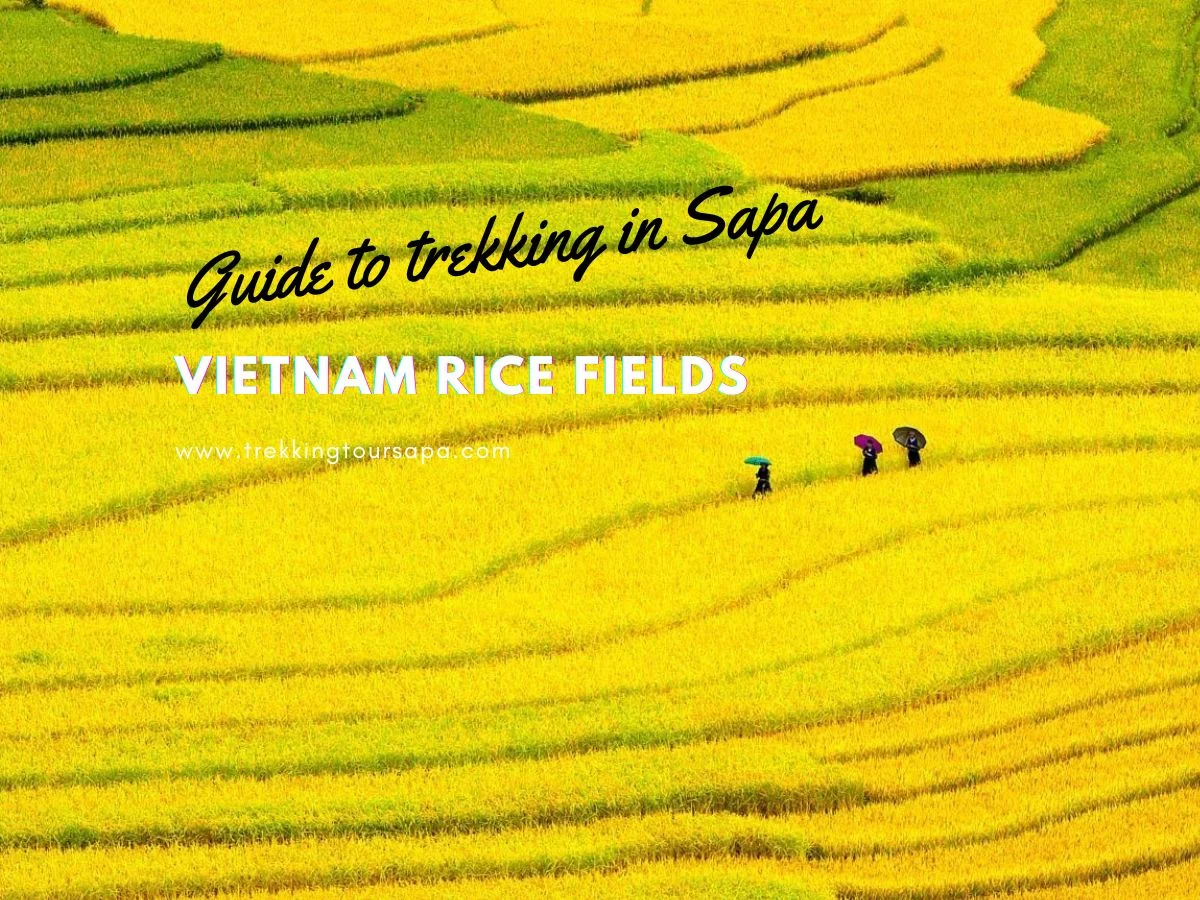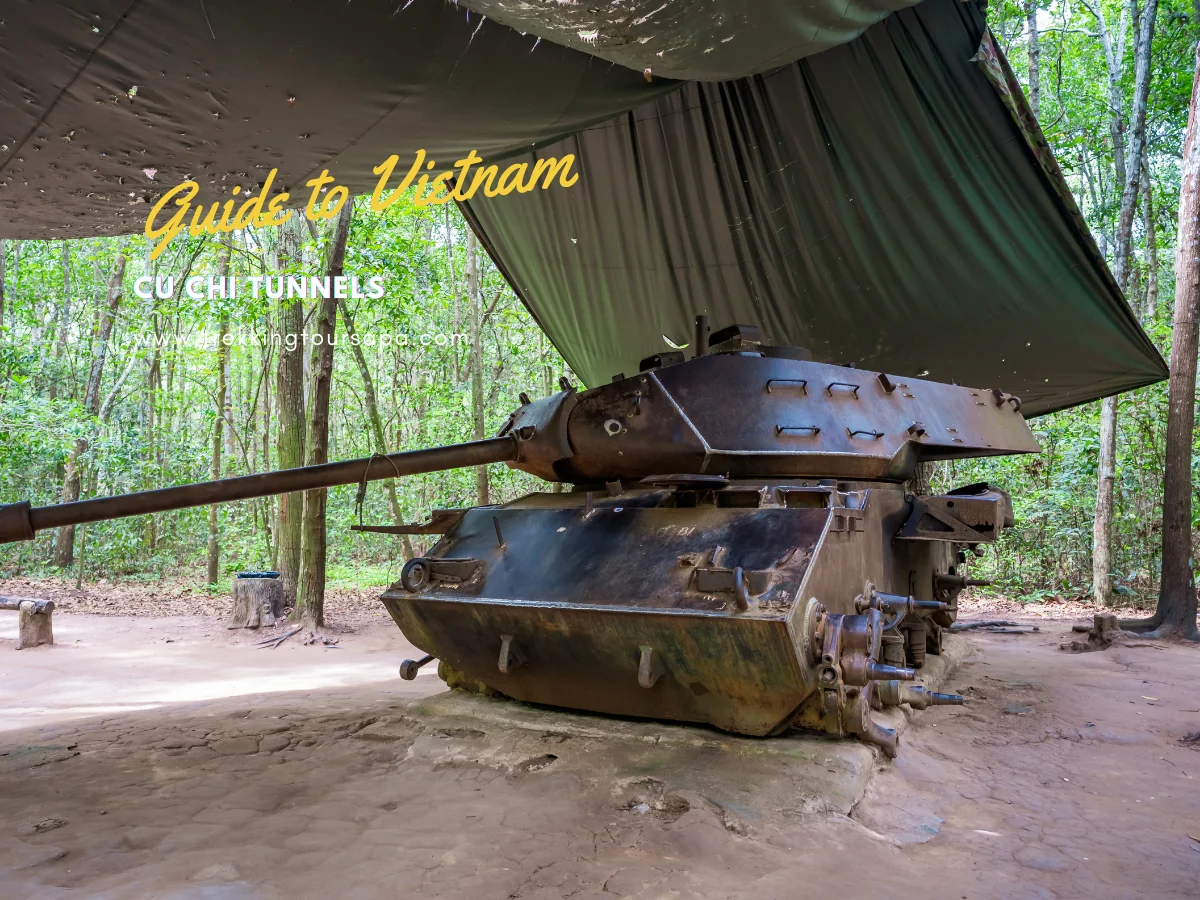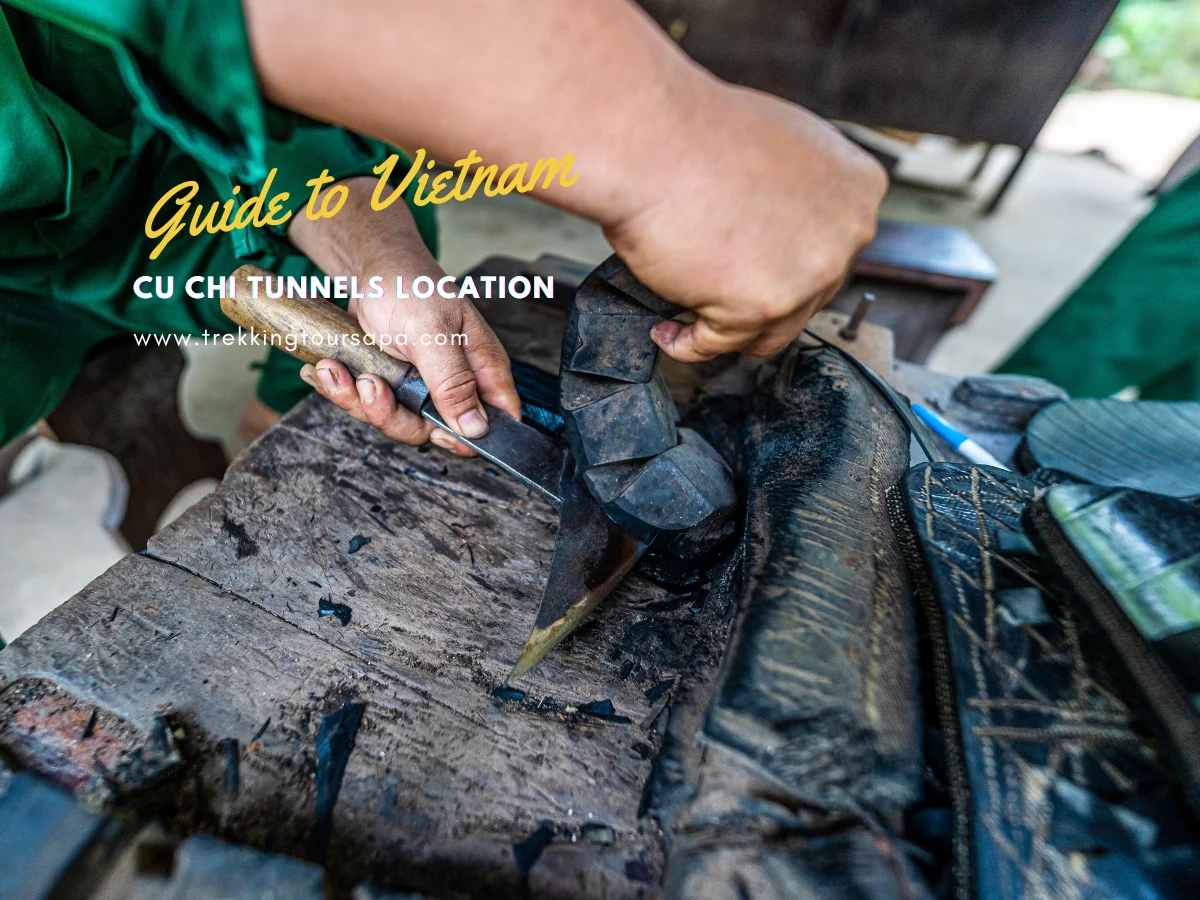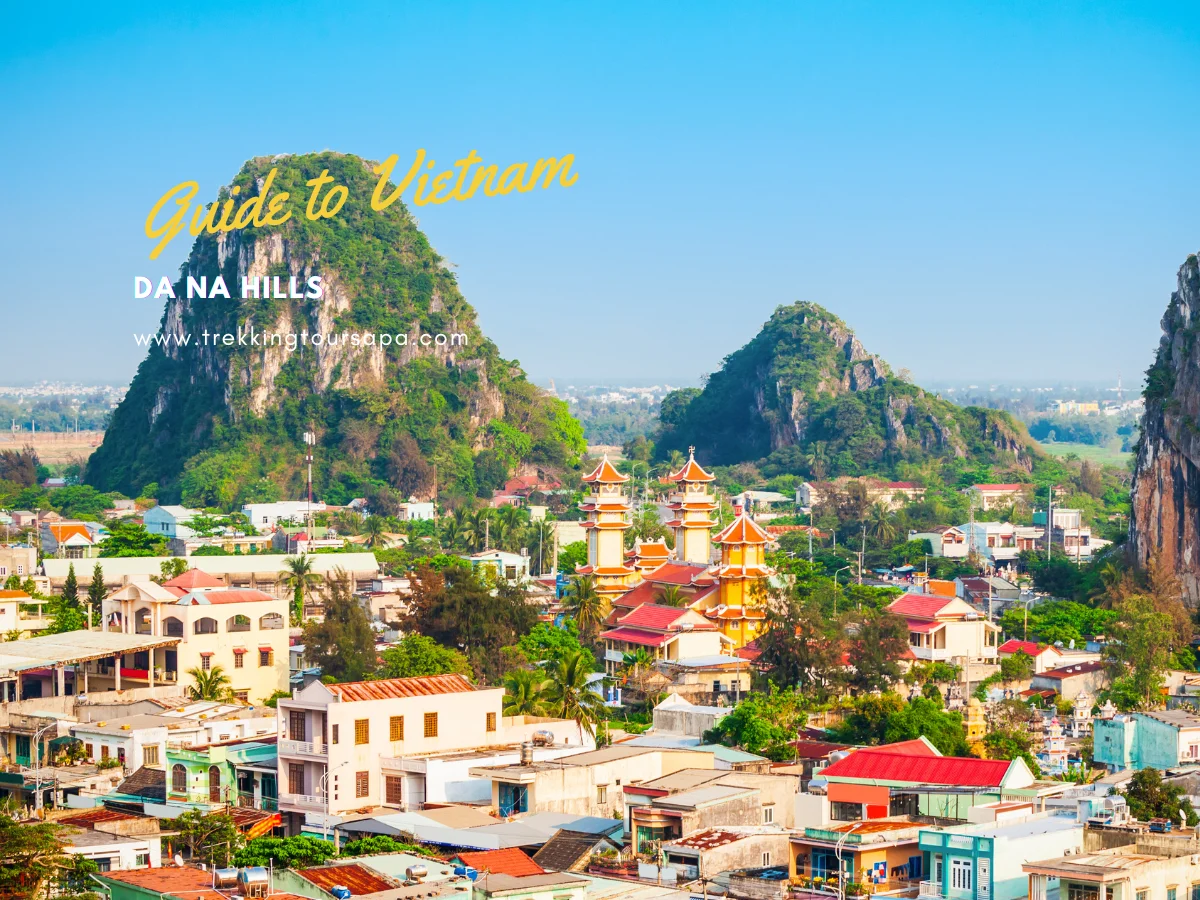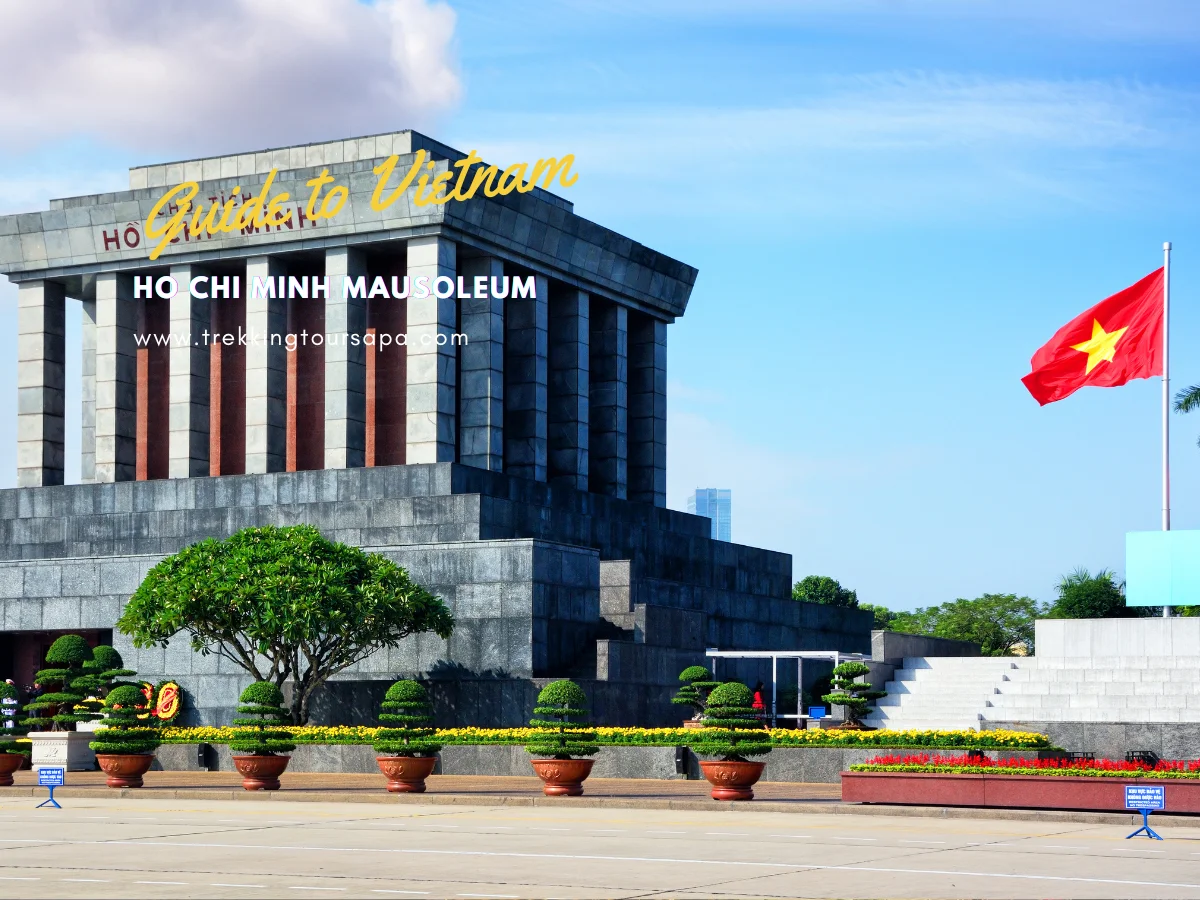Vietnam rice fields are some of the most beautiful, tranquil places on Earth. I’ve had the pleasure of visiting them several times and can honestly say that there is no other place like it. The vibrant green of the freshly harvested paddies, coupled with the ancient Vietnamese culture and traditions, make for an unforgettable experience. As a rice field specialist, I’d like to take you on a journey through this fascinating landscape and show you why Vietnam’s rice fields are so special.

The history of Vietnam dates back centuries, but its people have been growing and harvesting rice since at least 1000 BCE. Even today, many communities continue their traditional farming practices using tools and techniques passed down from generation to generation. It’s hard not to be moved by these timeless scenes – they embody a deep appreciation for nature as well as a subconscious desire for freedom.
Today, Vietnam produces more than 40 million tons of paddy each year – making it one of the largest producers in Asia (and the world). But beyond numbers lies something much deeper: a unique way of life that has sustained generations of farmers and continues to inspire those who visit its magnificent Vietnam rice fields. In this article, we’ll explore just how amazing these landscapes truly are!
Table of Contents
ToggleOverview
History Of Rice Cultivation In Vietnam
It’s believed that rice cultivation in Vietnam has been around for more than 3,000 years. But is this true? A closer look reveals a truth even more remarkable: Vietnamese have not only cultivated and farmed rice on their land since ancient times, but they’ve also developed sophisticated traditional methods of irrigation, crop rotation, and soil management to maximize yields.

These practices were passed down from generation to generation until modern advances in technology enabled the development of integrated systems combining both traditional methods with new technologies and techniques. This allowed farmers to increase efficiency without sacrificing production quality – putting them at the forefront of rice production for centuries.
Today, thanks to their dedication and skillful use of these cultivation techniques, Vietnam produces over 20 million tons of milled paddy each year – making it one of the world’s top producers. Rice farming in Vietnam continues to be an important part of daily life as well as an integral component of its culture and economy. With such a rich history behind it, we now turn our attention toward what types of rice are grown here today…
Types Of Rice Grown In Vietnam
Vietnam is home to a wide variety of rice, and the country’s farmers have been growing different types for centuries. Indica rice is one of the most popular varieties in Vietnam due to its high yield potential and ability to withstand floods. Glutinous rice is another popular crop grown throughout the country; it has a distinctive sticky texture when cooked. Japonica rice also grows well in Vietnam’s tropical climate, and many local dishes are made with this type of grain. Aromatic rice such as Jasmine or Basmati is becoming more common on Vietnamese tables each year as their delicious flavor and scent grow increasingly popular among diners. Finally, red rice can be found in certain regions of Vietnam, where it is often used in traditional dishes like bánh đúc or bánh chưng.

The cultivation of these various types of rice requires careful management from farmers – especially when it comes to water management. This becomes even more important during times of drought or heavy rainfall that can disrupt crops if not managed properly. In this next section, we will explore the role of water management in successful rice production in Vietnam.
The Role Of Water Management In Rice Production
Water management is the lifeblood of successful rice production in Vietnam. It’s like a finely-tuned orchestra; each instrument must play its part for it to work seamlessly and produce beautiful music. As an expert on Vietnamese rice fields, I will explain the role of water management and how it affects the success of local farmers’ harvests.
Vietnamese farmers use irrigation systems to control the flow of water into their fields, which helps them manage soil moisture levels and make sure they have enough water throughout the growing season. Traditional methods such as rainwater harvesting are also used by some farmers who don’t have access to large amounts of freshwater from rivers or streams. These traditional techniques help conserve water and ensure there is enough available during times of drought.

The importance of properly managing water cannot be overstated when it comes to producing a good harvest. If too much water is applied at once, crops can suffer from nutrient deficiencies due to leaching away important minerals in the soil. On the other hand, if not enough is applied, plants may become stunted or die due to lack of hydration. By carefully monitoring water usage through irrigation systems and using traditional methods where possible, local farmers can better regulate their crop yields and increase their chances for success with every planting season.
Sapa 1 Day Tours
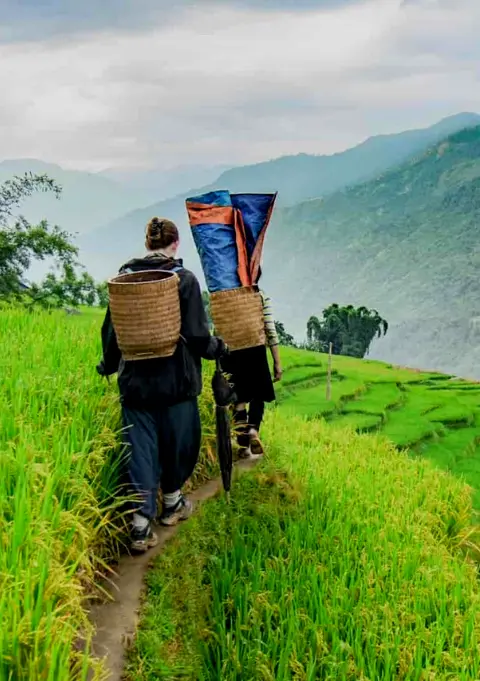
- 1 day experience
- Moderate to challenging
- Cultural immersion & active adventure
- Rice fields, valleys & villages
- Private tours
- Vegan-friendly
Sapa 2 Day Tours
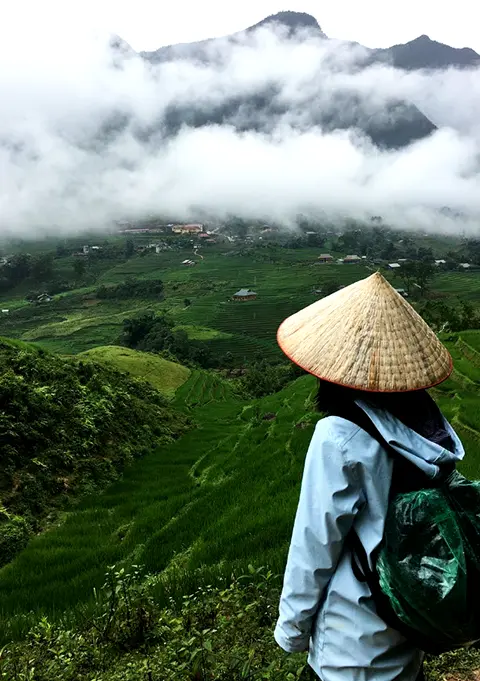
- 2 days 1 night experience
- Moderate to challenging
- Cultural immersion & active adventure
- Mountains, valleys, rice fields and villages
- Private tours
- Vegan-friendly
Sapa 3 Day Tours
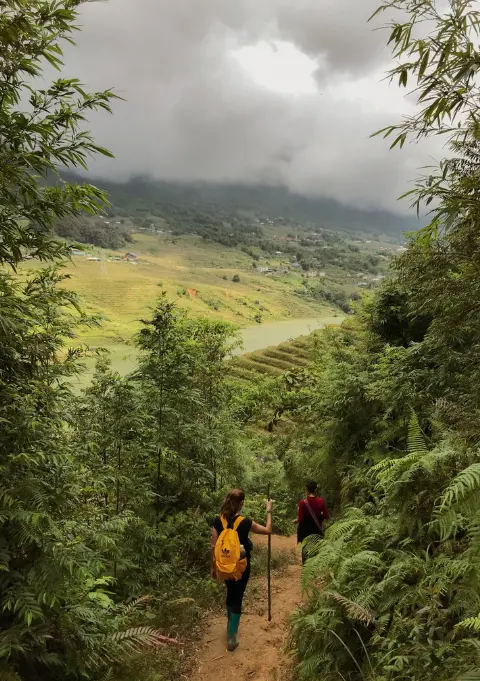
- 3 days 2 night experience
- Moderate to challenging
- Cultural immersion & active adventure
- Mountains, valley, rice fields & villages
- Private tours
- Vegan-friendly
Sapa 4 Day Tours
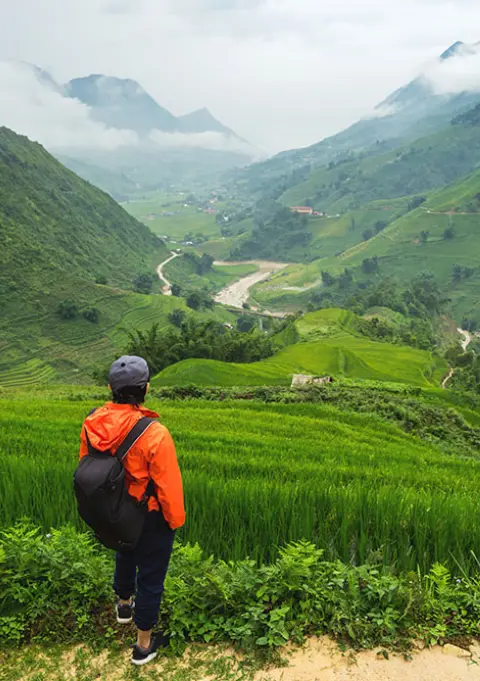
- 4 days 3 night experience
- Moderate to challenging
- Cultural immersion & active adventure
- Mountains, valleys, rice fields & villages
- Private tours – Less Touristic
- Vegan-friendly
In summary, effective water management is critical for achieving optimal yield in Vietnam rice fields. This requires careful consideration on behalf of local farmers regarding what type of system should be employed as well as understanding how best to leverage traditional techniques when needed. With proper planning and execution, this balance between modern agricultural technology and time-tested practices can provide plentiful harvests year after year for those willing to put in the effort required for success. Moving forward we’ll explore another key factor -the benefits that Vietnam rice fields offer to both people and the environment alike-.
Benefits Of Rice Fields To The Environment
Vietnam Rice fields are an essential part of the environment, providing numerous benefits. From water management to agricultural practices and traditional varieties, rice farming offers a range of advantages that can positively impact ecosystems and wildlife habitats.
To begin with, rice fields provide many valuable ecosystem benefits. The flooded paddies act as reservoirs for surface runoff, helping to prevent flooding downstream in rivers and springs. Additionally, they help to create healthy soils by increasing biological activity within them; this helps promote soil fertility and improve crop yields. Furthermore, there is evidence that suggests these paddies may also contribute to carbon sequestration.

The second benefit of rice fields is related to water management. They offer a unique way of storing large amounts of excess rainfall during wet seasons or times when heavy rains occur suddenly. This enables farmers to better manage their water resources throughout the entire year by having access to extra supplies when needed most. Additionally, some irrigated systems use fish farming techniques which further optimize the utilization of available water resources while producing additional food sources from aquatic species such as carp and tilapia.
Finally, one advantage of traditional varieties over modern hybrids is their ability to adapt more easily to local conditions due to genetic diversity – something that cannot be replicated artificially through breeding programs alone. This means farmers have access to plants well-suited for their particular climate which not only increases yield potential but also makes crops less susceptible to disease and pests. Moreover, certain breeds are known for being able to tolerate harsher environmental stresses like drought or salinity – making them invaluable tools in regions prone to extreme weather events like typhoons or floods.
Sapa 1 Day Tours

- 1 day experience
- Moderate to challenging
- Cultural immersion & active adventure
- Rice fields, valleys & villages
- Private tours
- Vegan-friendly
Sapa 2 Day Tours

- 2 days 1 night experience
- Moderate to challenging
- Cultural immersion & active adventure
- Mountains, valleys, rice fields and villages
- Private tours
- Vegan-friendly
Sapa 3 Day Tours

- 3 days 2 night experience
- Moderate to challenging
- Cultural immersion & active adventure
- Mountains, valley, rice fields & villages
- Private tours
- Vegan-friendly
Sapa 4 Day Tours

- 4 days 3 night experience
- Moderate to challenging
- Cultural immersion & active adventure
- Mountains, valleys, rice fields & villages
- Private tours – Less Touristic
- Vegan-friendly
This serves as just a brief overview of what rice fields have contributed towards improving our planet’s health and well-being over generations – from providing rich habitats for native wildlife populations down to streamlining flood control mechanisms used today around the world! With these points in mind, it’s clear why exploring how these ancient systems affect local ecosystems and wildlife habitats is so important moving forward into future generations.
Impact On Local Ecosystems And Wildlife Habitats
As a rice field specialist, I can attest that Vietnam rice fields have an immense impact on local ecosystems and wildlife habitats. In particular, the country’s agricultural practices used in cultivating its vast array of rice lands are revolutionizing sustainability efforts globally. By implementing sustainable farming techniques such as crop rotation, conservation tillage, and using cover crops to reduce erosion and improve soil fertility, Vietnamese farmers are both promoting biodiversity in their surrounding areas while also improving yields with fewer inputs—a truly impressive feat.

The presence of these intricate systems encourages healthy populations of birds, amphibians, mammals, and insects alike; providing shelter for some species while others benefit from the food sources sourced from these lush environments. Besides increasing biodiversity levels, wetlands within rice fields are now being recognized for their contributions towards controlling flooding by absorbing excess water during monsoon season. Furthermore, organic matter found in these flooded soils helps to retain nitrogen and other nutrients which support aquatic life too.
By utilizing modern methods of agriculture such as integrated pest management (IPM) and agroforestry systems alongside traditional irrigation schemes like ‘the bồ đào’, farmers throughout Vietnam can successfully manage resources without sacrificing production or degrading ecosystems any further than necessary. This has allowed them to remain at the forefront of global rice-farming advancements while preserving the integrity of countless animal habitats over time.
Agricultural Practices Used In Northern Vietnam Rice Fields
Vietnam has a long and rich history of rice cultivation, with many traditional practices still in use today. Rice is an important part of the Vietnamese economy and culture, and agricultural practices are essential for successful crop production. Here we will discuss some of the main techniques used to cultivate rice in Vietnam:
- Water Management: Effective water management is crucial for growing healthy crops of Vietnamese rice. This can involve using irrigation systems such as reservoirs or dams, terraced fields, and ditches, or simply relying on rainwater during certain times of the year. Techniques like these help farmers maintain consistent yields throughout the season.
- Traditional Varieties: Over time, generations of farmers have developed varieties that are well-suited to local conditions and their particular needs. In addition to utilizing modern technology, experienced farmers often rely on centuries-old methods and knowledge passed down through families to improve yield quality and quantity.
- Technology Usage: Many innovative technologies are now being adopted by Vietnamese rice growers to increase efficiency while reducing labor costs. Automation systems such as precision agriculture tools allow farmers to monitor field performance more closely than ever before, while artificial intelligence is helping them make better decisions about how best to manage resources like water and fertilizer inputs over time.
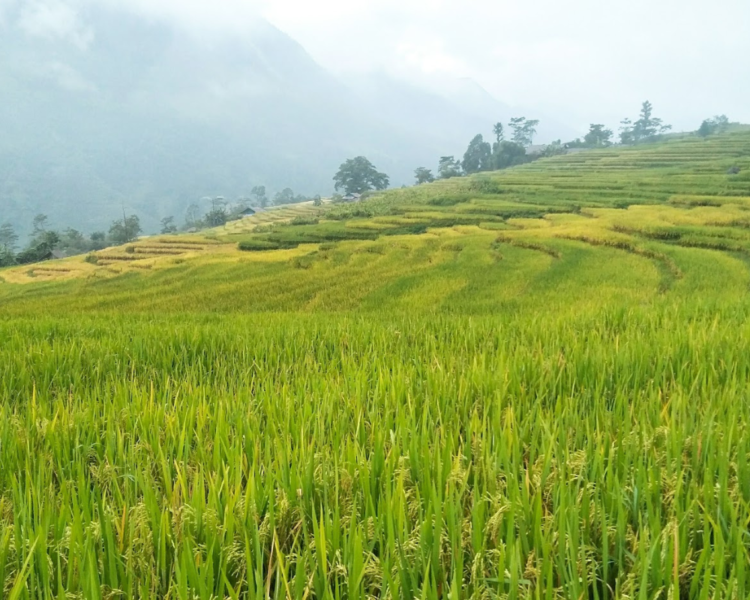
All these factors contribute greatly to the success of Vietnam’s rice industry, which relies heavily on sustainable agricultural practices for its continued growth and prosperity. As farming evolves with new technology usage, it’s clear that there must be a balance between tradition and innovation if the country’s future food security is guaranteed – a challenge facing all farmers who grow rice in Vietnam today!
Challenges Faced By Farmers Growing Rice In Vietnam
Growing rice in Vietnam is a challenging undertaking due to many factors. Water scarcity, crop diseases, labor shortage, and price fluctuations are all obstacles that farmers have to overcome in their quest for successful rice production.
| Challenge | Impact | Solutions |
|---|---|---|
| Water Scarcity | Reduced yield/quality of crops | Irrigation systems; water conservation techniques |
| Crop Diseases | Loss of harvestable grain, reduced yield & quality of crops | Appropriate application of pesticides & fertilizers; rotating the fields with other crops; use of resistant varieties |
| Labor Shortage | Difficulty harvesting & tending to fields during peak season | Developing mechanization methods; recruiting more laborers from neighboring areas |
| Price Fluctuations | Uncertainty over profits | Setting up cooperative farms & purchase agreements between buyers & sellers |
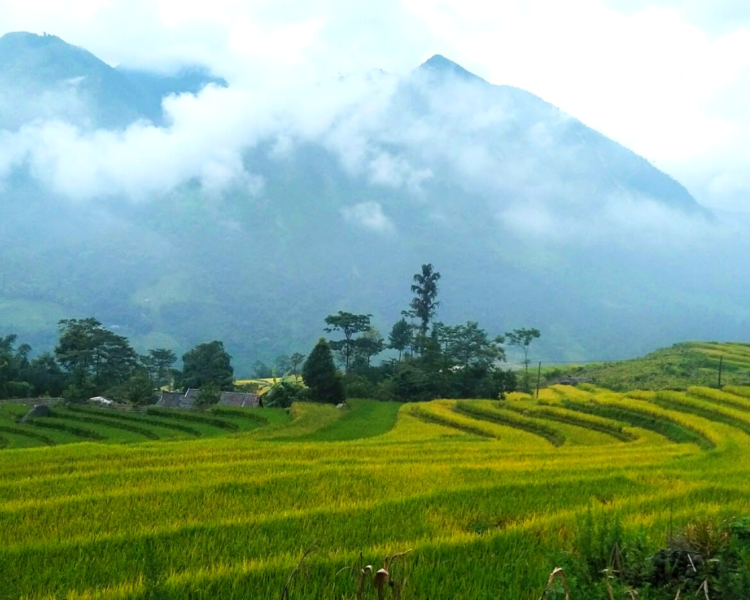
In addition to these challenges faced by individual farmers trying to grow rice successfully, there are also issues beyond their control such as weather patterns and changes in government policies which can greatly affect overall yields and prices. The Vietnamese agriculture sector needs to remain resilient despite these external pressures to sustain its significant contribution to the country’s economic growth. This leads us to our next topic – exploring the economic significance of the Vietnamese rice industry…
Economic Significance Of The Vietnamese Rice Industry
Ah, the Vietnamese rice industry! It’s a thing of beauty and economic significance. With its wide-reaching influence across Vietnam and beyond, this behemoth of the industry has been keeping bellies full and wallets lined since time immemorial. Here are just three reasons why:
- It provides jobs – The vast majority of people in rural areas depend on rice farming for their livelihoods.
- It keeps food costs low – By providing high yields of quality grain at reasonable prices, it helps keep market prices down while still allowing farmers to make a decent living from their crops.
- It boosts exports – Rice is one of Vietnam’s biggest export commodities, with millions of tonnes exported every year to countries around the world.
In short, the Vietnamese rice industry is essential not only for feeding its citizens but also for helping sustain regional economies both domestically and abroad. Its importance cannot be overstated. Now let us explore how technology is used in rice farming today…
Sapa 1 Day Tours

- 1 day experience
- Moderate to challenging
- Cultural immersion & active adventure
- Rice fields, valleys & villages
- Private tours
- Vegan-friendly
Sapa 2 Day Tours

- 2 days 1 night experience
- Moderate to challenging
- Cultural immersion & active adventure
- Mountains, valleys, rice fields and villages
- Private tours
- Vegan-friendly
Sapa 3 Day Tours

- 3 days 2 night experience
- Moderate to challenging
- Cultural immersion & active adventure
- Mountains, valley, rice fields & villages
- Private tours
- Vegan-friendly
Sapa 4 Day Tours

- 4 days 3 night experience
- Moderate to challenging
- Cultural immersion & active adventure
- Mountains, valleys, rice fields & villages
- Private tours – Less Touristic
- Vegan-friendly
How Technology Is Used In Rice Farming Today
The modern rice farming industry has made remarkable advancements in technology to increase crop yields and yield quality. Precision farming is a practice used by many farmers that entails the application of digital irrigation, drones for crop monitoring, and big data analytics. These technologies allow farmers to better manage their land and crops while also reducing labor costs. Additionally, hydroponics farming is increasingly being used as an alternative form of cultivation that allows more efficient water management and higher yields with fewer resources.
These advances in technology have allowed the Vietnamese rice industry to become one of the most productive in the world. By using these new techniques, farmers can reduce operating costs while simultaneously maximizing productivity and output. This can help ensure food security for Vietnam’s population as well as generate income through exports to other nations. Moreover, it can potentially lead to decreased price volatility in international markets due to increased supply stability from larger harvests.
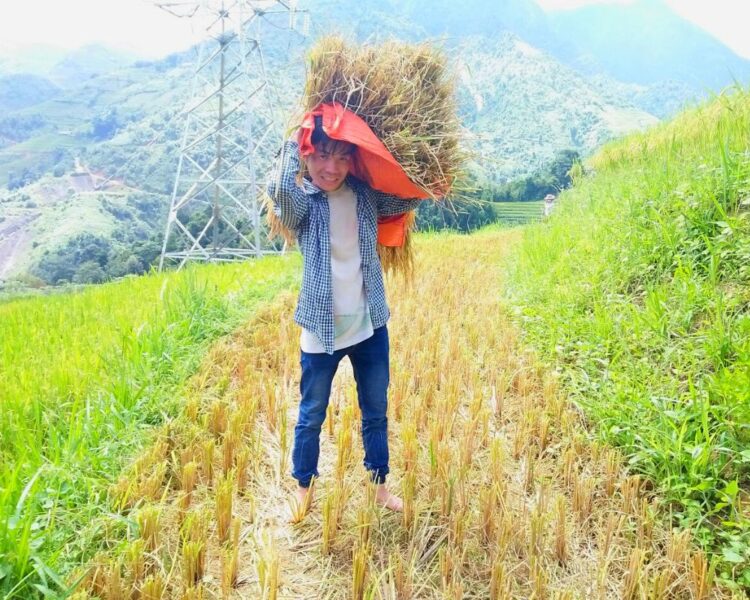
However, there is still much work needed to be done to preserve traditional varieties of Vietnamese Rice that may become endangered due to increasing mechanization and industrialization within the industry. It is important for all stakeholders involved – ranging from government officials, scientists, agricultural experts, and local farmers – to come together to protect this valuable resource for future generations before it disappears forever. With such efforts put forth towards preserving these traditional varieties of Vietnamese rice, we will be able to enjoy its culinary delights for years to come.
Preservation Efforts For Traditional Varieties Of Vietnamese Rice
Preservation efforts for traditional varieties of Vietnamese rice are essential to ensure the sustainability and continuation of native species. Traditional farming methods have been used in Vietnam since ancient times, primarily because these crops are more resistant to climate change and other environmental factors than modern hybrids. As a result, we must use preservation efforts to help maintain the genetic diversity of these traditional varieties.
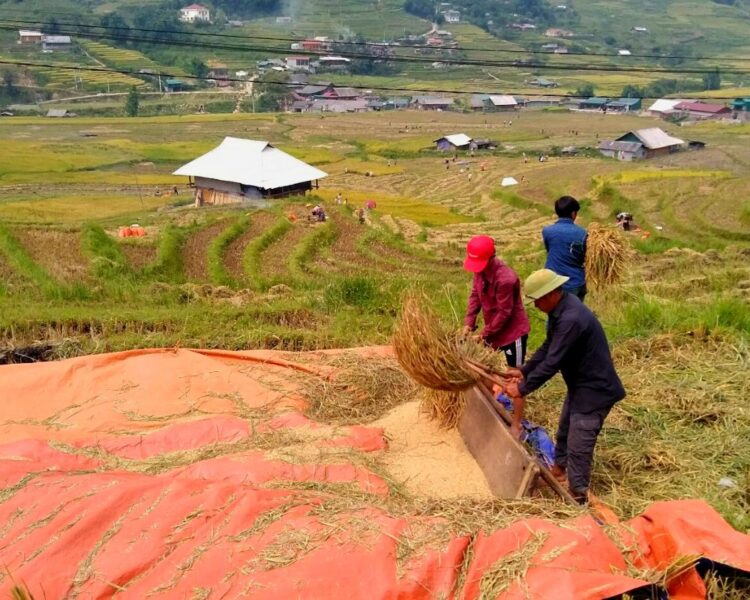
To achieve this goal, there has been an increase in the number of research initiatives focused on preserving traditional varieties of rice in Vietnam. These include field trials, seed exchange programs, and educational activities designed to raise awareness about the importance of protecting indigenous varieties of rice. Researchers at universities around the country also conduct studies into how best to keep native species viable over time. Additionally, local farmers are encouraged to participate in cooperative projects aimed at conserving traditional crops through agroforestry and other sustainable agricultural practices.
The combined effort from government agencies, researchers, non-governmental organizations (NGOs), and farmers can be seen in various areas throughout Vietnam where there has been significant progress toward maintaining biodiversity within rice fields. For example, large-scale conservation plans such as ‘Project 1 Million Hectares’ have helped protect thousands of hectares of land devoted to cultivating traditional varieties of rice across multiple provinces. It is clear that with a concerted effort from stakeholders across all levels – international, national, regional, and local – we can preserve our valuable resources while ensuring food security for generations yet to come.
Vietnam Rice Fields Frequently Asked Questions
What Is The Average Yield Of Rice Per Acre In Vietnam?
When it comes to the yield of rice per acre, there’s no denying that Vietnam is a leader in the industry. Rice has been cultivated here for centuries and their harvests are among the highest in the world. But what exactly is the average yield of rice per acre in Vietnam?
To answer this question, one must look at various factors such as soil quality, weather conditions, and farm management practices. In general, Vietnamese farmers tend to get an average yield of between 3-4 tons of unprocessed paddy rice per hectare or 2-3 tons per acre. The exact amount depends on these factors as well as how much fertilizer and water is used during cultivation.
In addition to providing food security for many people around the globe, Vietnam’s high yields also contribute significantly to its economy. Rice production employs over 10 million people across the country and provides income for another 70 million indirectly related workers. Achieving higher yields can have a huge impact on both individuals and nations alike – giving them greater freedom from poverty and hunger.
So while we know that Vietnam produces some of the highest yields of rice in the world, it remains important to understand all aspects which affect these numbers so we can continue to promote sustainable farming practices that benefit us all.
How Does The Weather Affect The Harvest Of Vietnamese Rice?
Weather plays an integral role in the success of a rice harvest. From monsoon rains and seasonal patterns to temperature effects and soil conditions, every factor must be taken into account. As a rice field specialist, I know firsthand how significant weather can be for successful harvests.
Rice farmers have to plan when it comes to their crops, taking into consideration the full range of environmental factors that come with each season: rain patterns, temperatures, and humidity levels. These elements all play together to determine how much yield can be obtained from any given acreage of land. The quality of the soil also affects this – if the soil is not suitable for growth or does not retain enough moisture during dry spells then yields will suffer significantly.
There are many ways one can prepare for these variables; firstly by researching local climate patterns and creating forecasts accordingly as well as understanding what sort of crop rotation works best with specific soils and environmentally-friendly farming practices such as cover cropping and crop diversification which help reduce the risk associated with extreme events like floods or droughts. Additionally, there is always something to gain from learning about traditional farming techniques used in Vietnam – methods passed down generations that may prove essential for those hoping to maximize their harvest potential year after year.
With all these considerations in mind, it’s easy to see why weather remains such an important component in ensuring high yields from Vietnam rice fields and why so much effort goes into properly preparing for each new growing season. Understanding both modern scientific approaches and traditional wisdom provides farmers with the tools they need to make informed decisions about how best to manage their resources during times of unpredictability – giving them back some control over their fate even against nature’s uncertainties.
How Much Does It Cost To Produce One Acre Of Vietnamese Rice?
The cost of producing one acre of Vietnamese rice is a highly debated topic in the agricultural industry. Rice production has long been an important staple crop for Vietnam, and the efficiency of their farming techniques can be seen in both its affordability and availability. By understanding all the elements that go into growing this grain, we can better understand why it costs what it does to produce one acre of Vietnamese rice.
First off, several factors influence how much it will cost to produce an acre of rice in Vietnam. The type of soil used for cultivation plays a large role, as well as other environmental factors such as temperature, rainfall, and humidity levels which can affect the yield from season to season. Additionally, labor costs are also taken into consideration when calculating production costs; due to rising wages in recent years, these have become increasingly more expensive.
Finally, technological advancements have had a major impact on production costs over time. New machinery has allowed farmers to increase yields while reducing manual labor needed – resulting in reduced overall expenses per acre harvested. Furthermore, improved storage facilities reduce spoilage rates after harvest by keeping stored grains safe from pests and disease. With improved technology comes increased quality control measures which not only help protect the environment but also help keep prices consistent throughout seasons and regions alike.
Modern-day farming practices have helped revolutionize traditional methods for cultivating high-quality crops with the minimal expense involved – allowing more people around the world access to nutritious food sources at competitive prices without compromising on quality or sustainability. This shift towards efficient agriculture technologies represents a huge step forward for those looking for ways to enjoy freedom through sustainable living and economic empowerment.
What Is The Future Outlook For The Vietnamese Rice Industry?
The future outlook for the Vietnamese rice industry is an interesting topic, one that has been receiving a great deal of attention in recent years. As global demand for rice increases and production costs remain high, it is essential to analyze yield projections as well as cost-benefit analyses when considering the potential of this important sector of Vietnam’s economy.
With its vast network of rivers and ideal climate conditions, Vietnam is uniquely positioned to be a major player in the international market. Rice production has long been a cornerstone of the country’s agricultural activity, providing sustenance and employment opportunities to millions across the nation. In terms of yields per acre, Vietnam consistently ranks among the highest-producing countries in the world. This reputation makes it an attractive option for buyers seeking reliable supplies at competitive prices.
To maximize worldwide appeal, however, Vietnam must continue investing heavily in research and development (R&D) initiatives aimed at increasing productivity while decreasing overall costs associated with production. Technological advancements such as automated harvesting machines have already contributed greatly towards streamlining operations and achieving greater efficiency, yet further innovation remains necessary if Vietnam wishes to remain competitive within today’s ever-evolving marketplace.
Considerable effort will be needed if Vietnamese farmers are going to stay ahead of their foreign competitors over both near-term and long-term horizons. Investment in appropriate infrastructure – from irrigation systems and fertilizers to storage facilities – will also be vital in ensuring consistent crop yields throughout changing weather patterns or sudden shifts in global trends affecting supply chains. With these measures taken into account, there appears to be plenty of opportunity for growth within this crucial sector moving forward.
What Is The Current Demand For Vietnamese Rice In The Global Market?
The current demand for Vietnamese rice in the global market is an important topic to consider, especially for those involved in the industry. Vietnam is one of the world’s leading producers and exporters of this staple crop, so it stands to reason that there would be a strong worldwide interest in its production and availability.
When discussing the current state of Vietnamese rice exports, it is clear that they are playing an increasingly larger role on the international stage. The country has seen a steady increase in both domestic consumption and export volumes over recent years due to improved agricultural techniques as well as higher yields produced by their farmers. This has led to greater overall demand from countries around the globe that are looking to purchase quality grains at competitive prices. In addition, Vietnam has also become known for producing specialty varieties such as jasmine and basmati which have earned them even more attention within certain foreign markets.
In terms of imports into Vietnam, there are still high levels of imported grain coming in primarily from China and Thailand while domestic supply continues to grow rapidly. This speaks not only to increased local demand but also shows how much potential lies ahead for further growth throughout the region given all these factors combined with ongoing government efforts towards promoting sustainable agriculture practices. It will be interesting to see what other changes may come about when considering this ever-evolving field in Southeast Asia going forward.
Overall, Vietnam’s rice sector looks set for continued success if certain key components can remain consistent or improve upon existing conditions; namely efficient farming methods, access to reliable transportation networks, and favorable purchasing power parity among others must all continue working together harmoniously for future growth prospects to remain achievable.
Conclusion
Rice has been a staple in Vietnam for centuries and is an important part of the economy. As a rice field specialist, I can confidently say that Vietnamese rice fields are among some of the most productive in the world. With average yields per acre ranging from 2-6 tons, depending on weather conditions and other factors, it’s no wonder why so many people rely upon this crop for sustenance.
Overall, the cost to produce one acre of Vietnamese rice is relatively low compared to other countries’ production costs. Additionally, the current demand for Vietnamese rice worldwide continues to increase as more people recognize its quality and flavor. This bodes well for the future outlook of the industry, which should continue to grow and expand even further over time.
To sum up: Vietnam’s rice fields are incredibly efficient producers with high yields at a low-cost rate; they provide sustenance not only to those living there but also to global markets as well. The future looks promising for this vital sector of agriculture —a veritable ‘grain of hope’!
Sapa 1 Day Tours

- 1 day experience
- Moderate to challenging
- Cultural immersion & active adventure
- Rice fields, valleys & villages
- Private tours
- Vegan-friendly
Sapa 2 Day Tours

- 2 days 1 night experience
- Moderate to challenging
- Cultural immersion & active adventure
- Mountains, valleys, rice fields and villages
- Private tours
- Vegan-friendly
Sapa 3 Day Tours

- 3 days 2 night experience
- Moderate to challenging
- Cultural immersion & active adventure
- Mountains, valley, rice fields & villages
- Private tours
- Vegan-friendly
Sapa 4 Day Tours

- 4 days 3 night experience
- Moderate to challenging
- Cultural immersion & active adventure
- Mountains, valleys, rice fields & villages
- Private tours – Less Touristic
- Vegan-friendly
